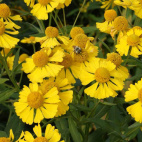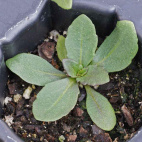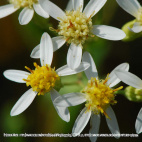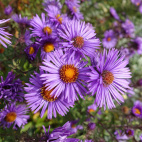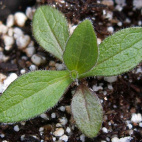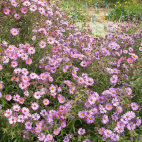Color
Availability
USDA Zone
Region
Type
Duration
Season
Germination
Soil
Sunlight
Height
Use
Narrow Your Search
Color
Availability
USDA Zone
Region
Type
Duration
Season
Germination
Soil
Sunlight
Height
Use
Wildflower Seeds - Northern Region
The Northern region is home to our Canadian friends in the eastern provinces, as well as the northern-most part of the Eastern US. This area is characterized by a long, cold winter with lots of snow, and a short humid summer that only lasts about 3 or 4 months. Most of the area is classified as a UDSA Growing Zone 4 or less, and the species that grow here have interesting ways to perpetuate themselves in spite of the short growing season. There are a lot of forests and wetlands in this region, so adequate moisture is hardly ever a problem. Look up your growing zone to make sure that the Northern wildflower seeds that you want to grow are winter hardy. Alternatively, just order annual flower seeds online so that the plant does not need to make it through the winter, but can reseed itself and come back from seed the next year.
-
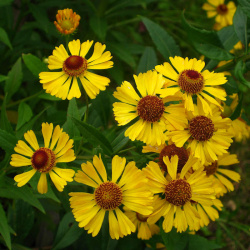 Autumn Sneezeweed Seeds
Helenium autumnale
If you tend to have heavy or wet soil in your garden spot, then these may be just the wildflower that you need! The daisy-like perennial can also be grown in a medium soil but needs to be well-watered, as they do not tolerate drought.Quick View$2.98 Pkt - $10.57 / Oz
Autumn Sneezeweed Seeds
Helenium autumnale
If you tend to have heavy or wet soil in your garden spot, then these may be just the wildflower that you need! The daisy-like perennial can also be grown in a medium soil but needs to be well-watered, as they do not tolerate drought.Quick View$2.98 Pkt - $10.57 / Oz -
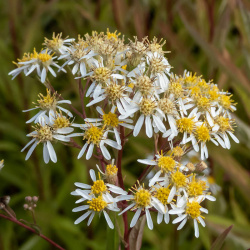 On Sale!
Flat Topped Aster Seeds
Aster umbellatus
Blossoming in late summer, these soft, white flower clusters top 4' stalks. In the wild, this flat topped aster wildflower grows in moist, sandy areas or woodlands.Quick Viewx
On Sale!
Flat Topped Aster Seeds
Aster umbellatus
Blossoming in late summer, these soft, white flower clusters top 4' stalks. In the wild, this flat topped aster wildflower grows in moist, sandy areas or woodlands.Quick ViewxFlat Topped Aster Seeds
Aster umbellatus
Blossoming in late summer, these soft, white flower clusters top 4' stalks. In the wild, this flat topped aster wildflower grows in moist, sandy areas or woodlands.
$3.75 Pkt - $64.00 / Oz -
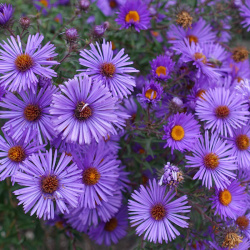 On Sale!
New England Aster Seeds
Aster novae-angliae
One of the most lovely and popular of the large asters, these fuschia flowers provide color for all of the autumn season. This variety is popular for prairie restoration projects because it provides a late-season source for pollen and nectar for our pollinator friends.Quick Viewx
On Sale!
New England Aster Seeds
Aster novae-angliae
One of the most lovely and popular of the large asters, these fuschia flowers provide color for all of the autumn season. This variety is popular for prairie restoration projects because it provides a late-season source for pollen and nectar for our pollinator friends.Quick ViewxNew England Aster Seeds
Aster novae-angliae
One of the most lovely and popular of the large asters, these fuschia flowers provide color for all of the autumn season. This variety is popular for prairie restoration projects because it provides a late-season source for pollen and nectar for our pollinator friends.
$3.48 Pkt - $22.17 / Oz -
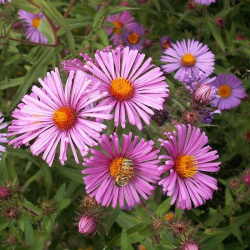 Out Of Stock
Pink New England Aster Seeds
Aster novae-angliae
Blooming in pink profusion, with some shades of purple, this vigorous variation is sure to brighten up your fall meadow. This native makes a great late season nectar and pollen source for pollinators.Quick Viewx
Out Of Stock
Pink New England Aster Seeds
Aster novae-angliae
Blooming in pink profusion, with some shades of purple, this vigorous variation is sure to brighten up your fall meadow. This native makes a great late season nectar and pollen source for pollinators.Quick ViewxPink New England Aster Seeds
Aster novae-angliae
Blooming in pink profusion, with some shades of purple, this vigorous variation is sure to brighten up your fall meadow. This native makes a great late season nectar and pollen source for pollinators.
$3.75 Pkt - $60.00 / Oz -
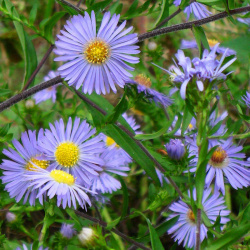 Swamp Aster Seeds
Aster puniceus
Found from northern Canada to southern Texas, this wildflower has one of the largest growing areas of any aster. The perennial usually grows in wetland or marshes, but will grow in average garden soil as well.Quick View$3.75 Pkt - $50.00 / Oz
Swamp Aster Seeds
Aster puniceus
Found from northern Canada to southern Texas, this wildflower has one of the largest growing areas of any aster. The perennial usually grows in wetland or marshes, but will grow in average garden soil as well.Quick View$3.75 Pkt - $50.00 / Oz
The Northern region is home to our Canadian friends in the eastern provinces, as well as the northern-most part of the Eastern US. This area is characterized by a long, cold winter with lots of snow, and a short humid summer that only lasts about 3 or 4 months. Most of the area is classified as a UDSA Growing Zone 4 or less, and the species that grow here have interesting ways to perpetuate themselves in spite of the short growing season. There are a lot of forests and wetlands in this region, so adequate moisture is hardly ever a problem. Look up your growing zone to make sure that the Northern wildflower seeds that you want to grow are winter hardy. Alternatively, just order annual flower seeds online so that the plant does not need to make it through the winter, but can reseed itself and come back from seed the next year.

